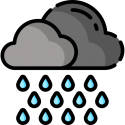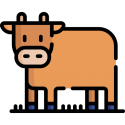MENU
poetic device: Imagery
Imagery means using figurative language in a way that appeals to our physical senses. Although the word “imagery” sounds like it refers only to visual language—the sense of sight—it actually refers to any of the five senses: sight, sound, smell, taste, and touch.
Imagery can include descriptive language, onomatopoeia, personification, metaphor, simile, or any other figurative language that enhances the impact of the poem by appealing to our bodily senses.

















